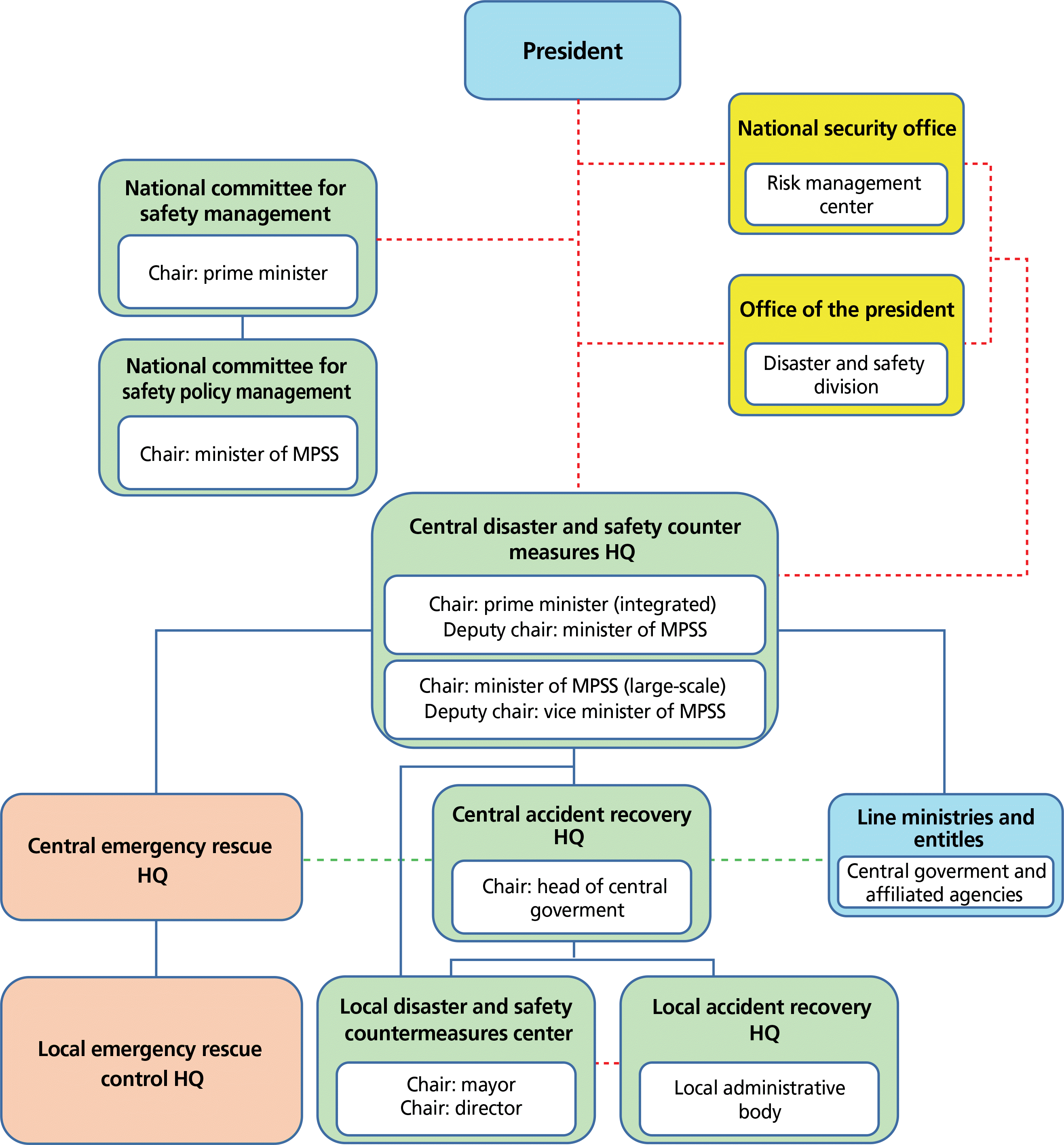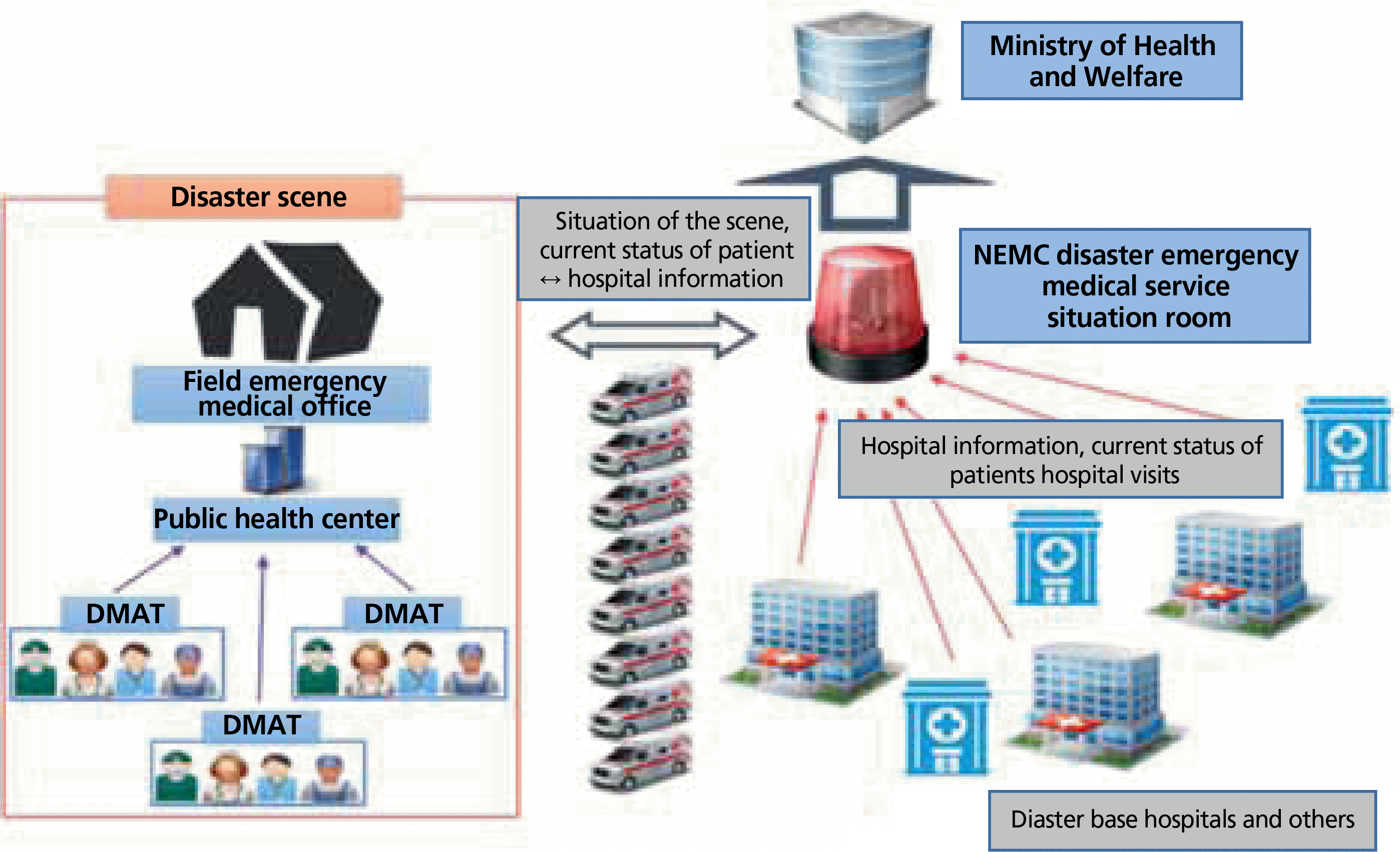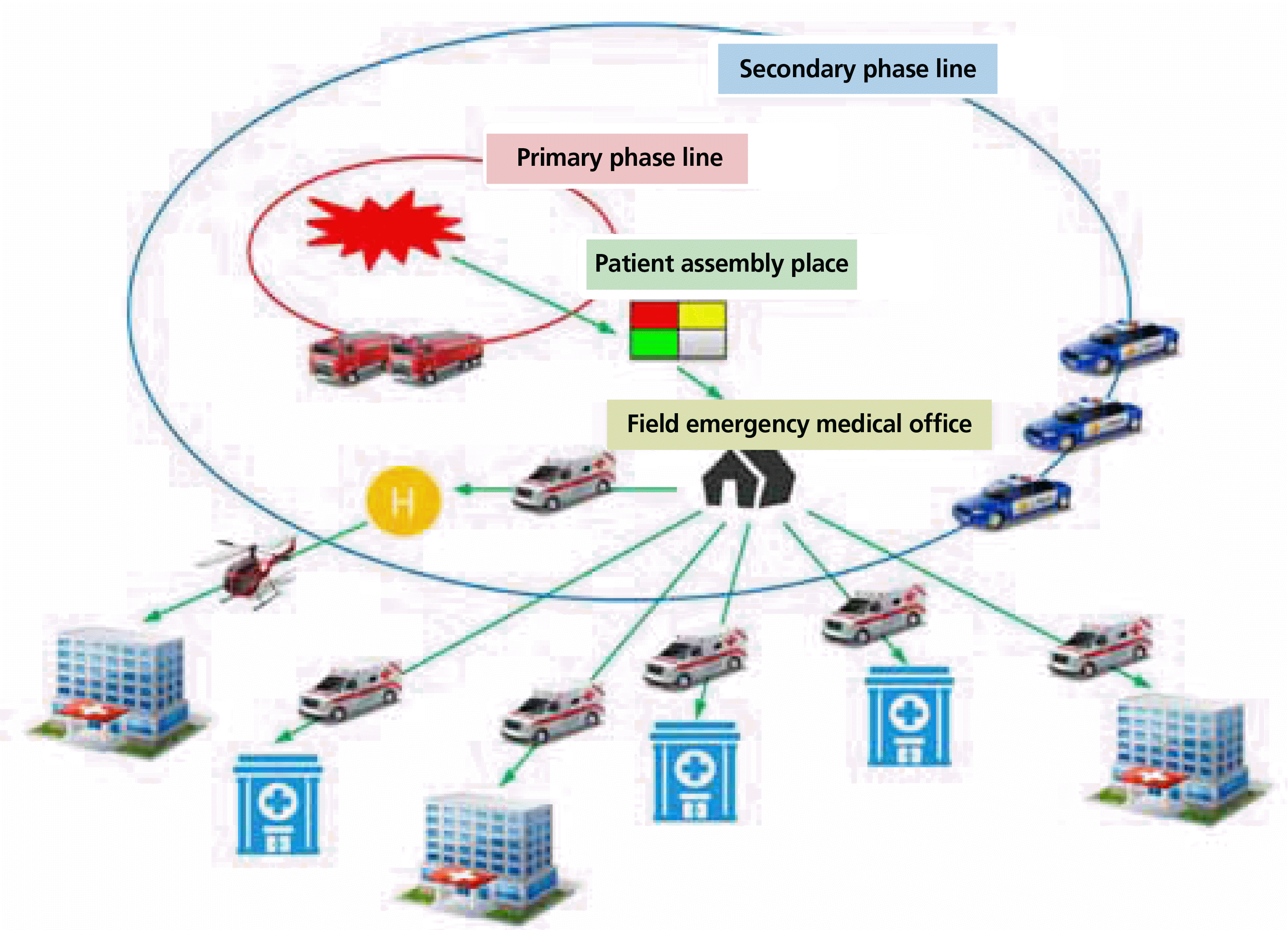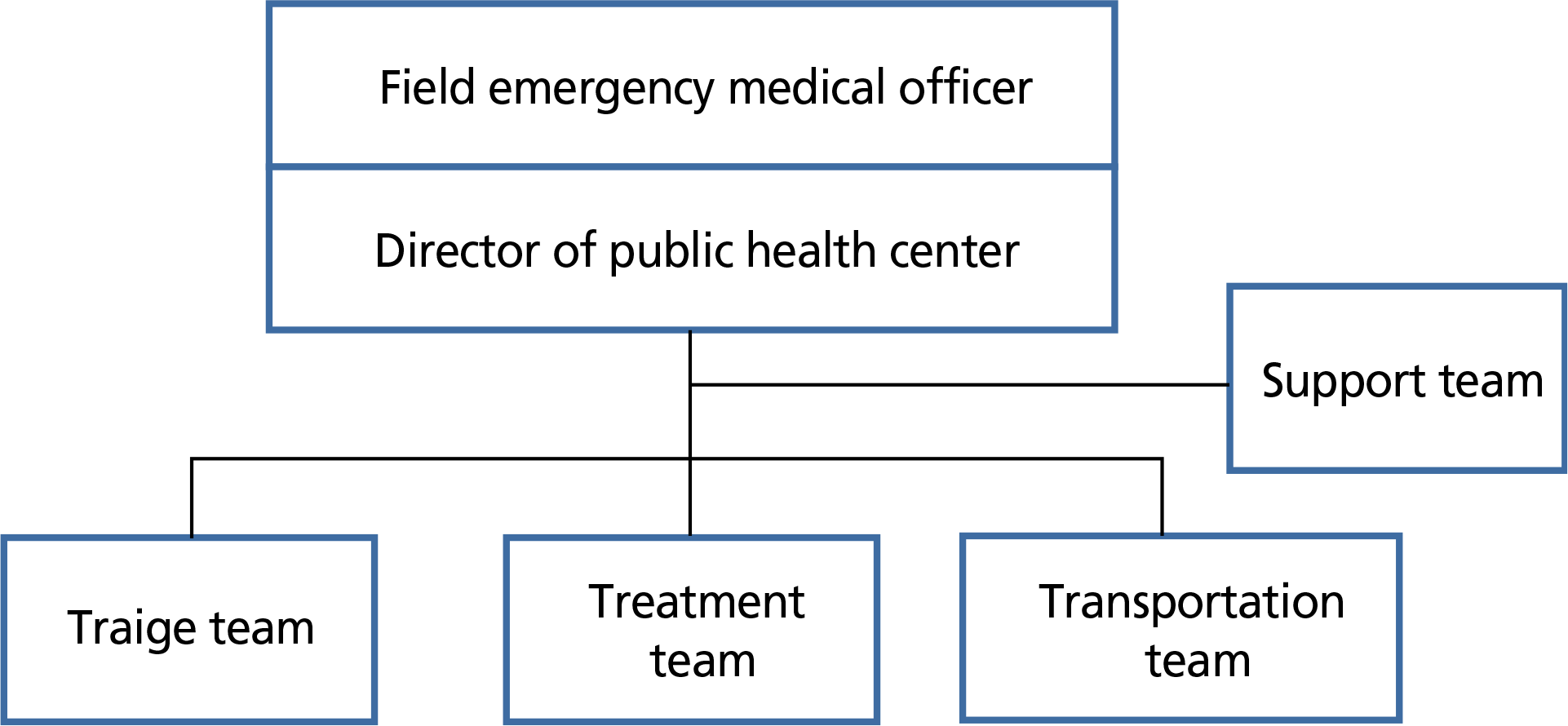Abstract
Disasters have frequently been a problem in Korea. Many initiatives have been carried out to mitigate this problem and to respond to disasters properly. The National Medical Emergency Center organized the Disaster Medical Response Center, which operates 24 hours a day. Regional emergency medical centers were designated as hospitals that receive disaster victims. Along with the designated disaster hospitals, the Ministry of Health and Welfare, city and district governments, and community health centers were all assigned standard roles to carry out in case of disasters. Disaster medical assistance teams were developed to respond to disaster events in their regions. This system has enabled a more rapid and systematic response to disaster events, and has standardized disaster-related medical equipment and vehicles to ensure the proper treatment of disaster victims. Although many valuable systems have been developed to respond to disasters, practical training within each institution and community-wide team training are still lacking; therefore, the government needs to further develop and support such programs.
Go to : 
REFERENCES
1. Regulations on Emergency Response Activities and Incident Command, Article 20. Nov 12, 2018.
2. Ministry of Health and Welfare. Emergency response manual of disaster emergency medical service. Sejong: Ministry of Health and Welfare;2016.
3. Ministry of Health and Welfare. Large-scale casualties occurred when emergency medical support guidelines. Sejong: Ministry of Health and Welfare;2015.
4. Mace SE, Jones JT, Bern AI. An analysis of disaster medical assistance team (DMAT) deployments in the United States. Prehosp Emerg Care. 2007; 11:30–35.

5. Fuse A, Yokota H. An analysis of Japan Disaster Medical Assistance Team (J-DMAT) deployments in comparison with those of J-DMATʼs counterpart in the United States (US-DMAT). J Nippon Med Sch. 2010; 77:318–324.

6. Ko HJ, Lee KH, Kim OH, Cha YS, Cha KC, Kim H, Hwang SO, Ahn ME, Cho JW. Experiences of a disaster medical assistance team in the Chun-cheon landslide disaster. J Korean Soc Emerg Med. 2013; 24:493–499.
Go to : 
 | Figure 1.National disaster control chart. MPSS, Ministry of Public Safety and Security (merged with the Ministry of Interior and Safety in 2017); HQ, headquarter. |
 | Figure 2.Disaster and transfer control center work flow. NEMC, National Emergency Medical Center; DMAT, disaster medical assistance team. Reproduced from Ministry of Health and Welfare. Emergency response manual of disaster emergency medical service. Sejong: Ministry of Health and Welfare; 2016 [2]. |
 | Figure 3.Disaster scene. Reproduced from Ministry of Health and Welfare. Emergency response manual of disaster emergency medical service. Sejong: Ministry of Health and Welfare; 2016 [2]. |
Table 1.
Dispatch indications of disaster medical assistance teams




 PDF
PDF ePub
ePub Citation
Citation Print
Print



 XML Download
XML Download